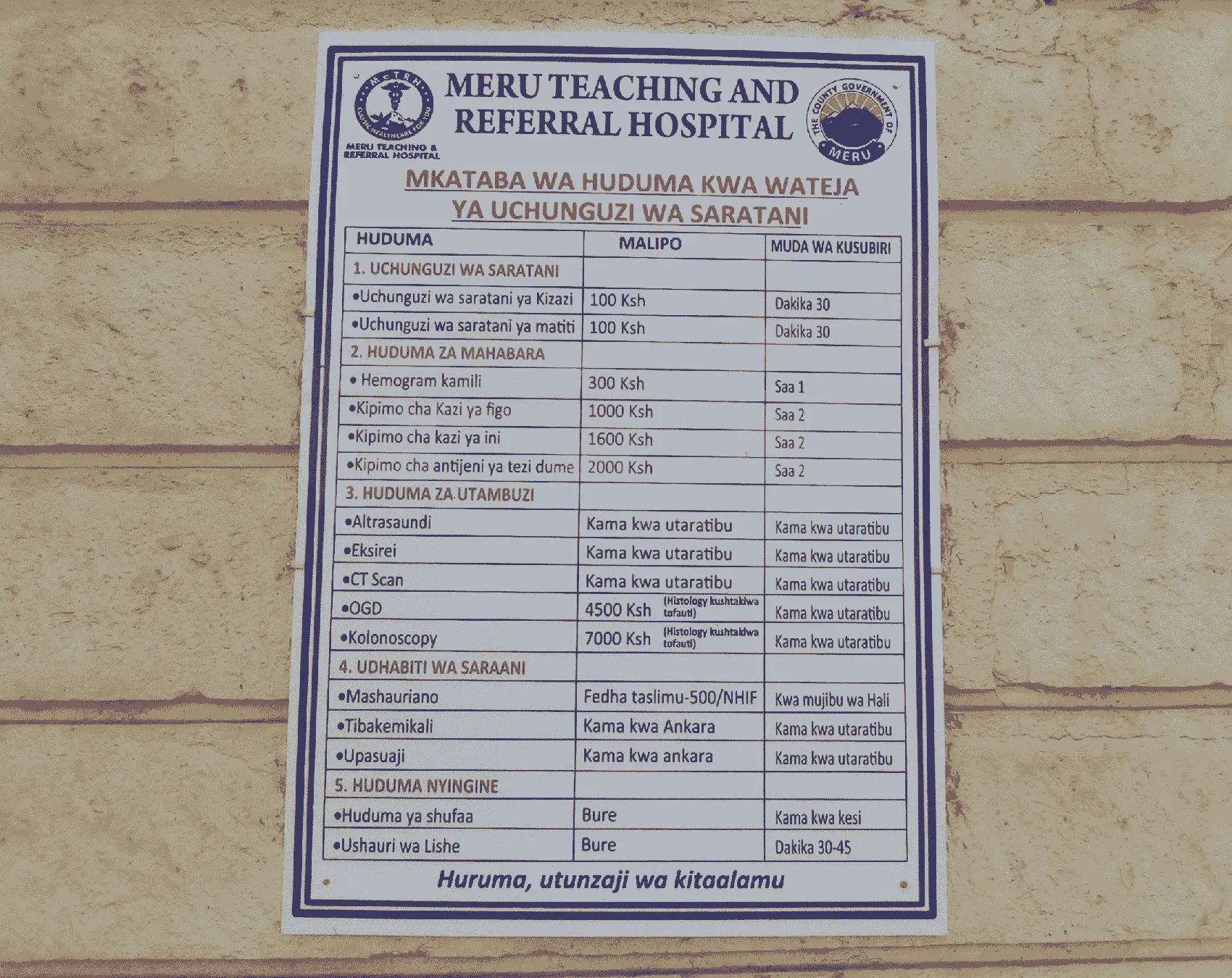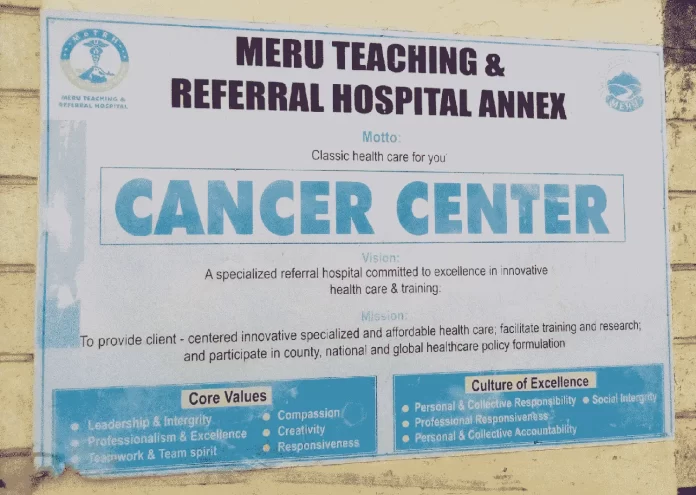By Gitonga Brian, DevReporter, Meru County

Key Highlights
- Prostate and Esophageal are the cancer types leading in Meru County.
- Meru Cancer Centre receives nearly 60 new patients monthly.
- Meru County advocates for National Hospital Insurance Fund (NHIF) enrolment.
According to a recent study published in the British Journal of Healthcare and Medical Research, Meru County accounts for 15% of cancer referrals to Kenyatta National Hospital.
“Meru is one of the leading counties in cancer cases. It consistently sees over 3000 cases in recent years, with almost 60 new patients monthly,” confirms Dr. Steven Kibengo Chege, a clinical Oncologist at the Meru Teaching and Referral Hospital.
“The number one cancer in males is prostate cancer, followed closely by cancers of the esophagus, stomach, and rectum. There are also liver and blood cancers,” says Dr Chege.
Reality of Cancer Diagnosis
Moses Kithinji, a triumphant cancer survivor from Kibaranyaki, Githongo, Meru County, shares his battle with prostate cancer.
“I had trouble urinating. After undergoing tests, they revealed stage 3 prostate cancer. I panicked, lost weight and hair. I left Meru for MP Shah Hospital in Nairobi where I underwent 37 radiotherapy sessions, till recovery,” recounts Moses.
Jared Mutwiri, father of four, is fighting stage 3 stomach cancer. Initially mistaking Jared’s symptoms for Miraa acidity, Cottolengo Mission Hospital diagnosed cancer. He is now undergoing treatment at Meru Cancer Centre, grateful for the County government’s chemotherapy support in Meru.
Faith Kanario, a mother of three, explains her battle against breast cancer and recovery journey: “I was diagnosed with early-stage breast cancer in 2019. Counselling helped me to accept treatment, and the Meru Cancer Center was crucial in administering chemotherapy. Now, I am doing well,” said Faith.

Cancer Treatment Challenges
Charles Kaithia, a father of two, lost his father to stage 4 Stomach Cancer in August 2022. With treatment costs high, National Hospital Insurance Fund (NHIF) contributed Ksh. 150,000 per hospital discharge. He urges others to consider securing suitable insurance.
Risper Nkirote, on her part, has fought breast cancer since 2011. She narrates her journey: “Financial challenges delayed my treatment until 2013. Traveling to Kenyatta National Hospital was difficult due to transportation costs. People eventually stopped helping me. NHIF and the Meru Cancer Center have allowed me to receive chemotherapy without struggle,” said Risper.
Support Mechanisms
Meru Hospice, a Non-Governmental Organisation (NGO) in Meru County, contributes to attainment of Sustainable Development Goals (SDGs) and Kenya’s Vision 2030 with palliative healthcare. The Chief Executive Officer Gladys Mucee, a palliative nurse, says their palliative healthcare services include pain management, bereavement support, home visits, and counselling.
Expert’s Recommendations
Dr. Chege urges the government to address two major challenges: Inadequate staffing, with him as the only public-sector Cancer Oncologist in Meru, and the absence of radiotherapy machines in the entire Meru County.
County’s Appeal
Dr. Joseph Wahome, Meru County’s Chief Officer for Health Services, views NHIF as vital for realising SDGs, Kenya’s Vision 2030, and implementing Article 43(1) (a) of the constitution which articulates economic and social rights, including health.
“At the moment, cancer treatment is quite expensive. We have been thinking about how to loop many people into the health insurance fund as a county and nationwide so that it is easier to cater for treatment.”
Fueling Hope
The inspiring tales of cancer warriors fuel hope amidst pain. The collective fight against cancer requires the involvement of both government and citizens.
It includes shattering stigma, championing early screening, treatment and care, all of which will contribute towards paving the path to a healthier nation.






